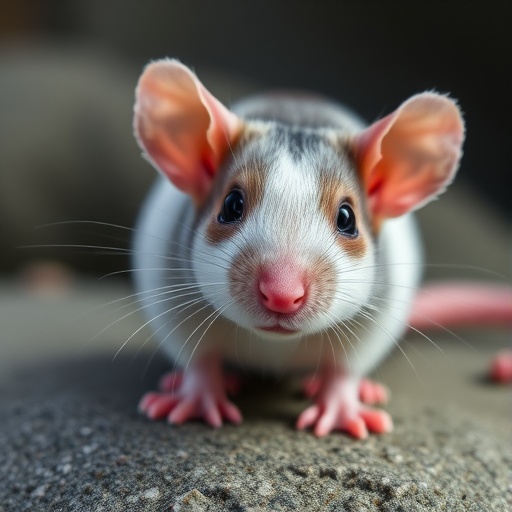Recent research spearheaded by the University of Rhode Island’s College of Pharmacy has unveiled alarming connections between microplastic exposure and the development of Alzheimer’s-like symptoms, specifically in genetically predisposed mice. Microplastics and nanoplastics, ubiquitous contaminants deriving from the breakdown of larger synthetic polymers, are now confirmed to penetrate critical biological barriers and infiltrate the central nervous system. These findings raise profound concerns about the potential impacts of environmental pollution on human brain health, especially among those harboring high-risk genetic profiles.
Micro- and nanoplastics are virtually omnipresent in modern environments, entering the human body through various vectors such as drinking water, food sources, and airborne particles. Their minute size allows them to translocate across physiological barriers that traditionally protect organs from harmful substances, including the notoriously selective blood-brain barrier. Previous investigations revealed that microplastics can circulate extensively within the body, but the latest study led by URI assistant professor Jaime Ross delves deeper into their neurotoxicological effects, highlighting cognitive impairments akin to those observed in Alzheimer’s disease.
The study focused on genetically engineered mouse models carrying distinct variants of the apolipoprotein E (APOE) gene, a crucial factor in Alzheimer’s disease susceptibility. Specifically, mice expressing the APOE4 allele—a variant linked to a 3.5-fold increased risk of developing Alzheimer’s in humans—were compared to mice with the more common APOE3 allele. This methodological approach allowed researchers to evaluate the interactive effects of genetic predisposition and environmental exposure on brain function.
Professor Ross notes that while carrying the APOE4 genotype elevates Alzheimer’s risk, outcome variability remains high among individuals due to complex gene-environment interactions. “Identical APOE4 carriers may experience vastly different cognitive trajectories depending on lifestyle and environmental exposures,” she explained. This insight underscores the imperative to scrutinize modifiable factors such as diet, physical activity, vitamin intake, and critically, chronic exposure to environmental toxins like microplastics.
To simulate realistic environmental exposure levels, the team administered polystyrene micro- and nanoplastics through the drinking water of both APOE3 and APOE4 mice over a three-week period. Polystyrene, a widely used polymer in packaging materials, is one of the most prevalent microplastic contaminants worldwide. This exposure resulted in the expected accumulation of plastic particles across multiple organ systems, including the brain, confirming the particles’ bioavailability and potential for systemic toxicity.
Post-exposure, the mice underwent comprehensive behavioral and cognitive evaluations. An open-field test assessed exploratory behavior by placing the animals in a novel chamber for extended observation. Typically, mice exhibit thigmotaxis—remaining close to the walls to avoid open spaces that signal predation risk. Intriguingly, APOE4 male mice exposed to microplastics demonstrated a marked increase in central, vulnerable zone activity, reflecting behavioral disinhibition and apathy, symptoms often seen in human Alzheimer’s patients.
Further cognitive assessment employed the novel object recognition test, a widely accepted paradigm for evaluating memory function. Female APOE4 mice exposed to microplastics showed significant deficits in recognizing new objects introduced after a delay, indicative of impaired short-term memory and cognitive decline. These sex-specific behavioral changes parallel clinical observations where male Alzheimer’s patients exhibit more pronounced apathy, while females display greater memory impairments.
The study’s findings articulate a clear, deleterious synergy between genetic vulnerability and environmental toxin exposure. By challenging mice with the APOE4 genotype with micro- and nanoplastics, researchers observed behavioral alterations and cognitive deficits that mirror human Alzheimer’s pathology, providing compelling evidence for environmental contributions to neurodegenerative disease progression. This research also emphasizes the necessity of considering sex as a biological variable when examining neurotoxicity and disease expression.
Microplastics represent one of the most pervasive environmental toxins, infiltrating ecosystems and human habitats globally, with little understanding thus far of their chronic health impacts. Complementary studies have demonstrated extensive microplastic contamination in natural water bodies, such as Narragansett Bay, where sediment samples reveal extraordinary accumulations exceeding 1,000 tons within just the top sediment layers. Such findings underscore the magnitude of human and wildlife exposure to these particles and the urgent need for regulatory intervention.
The researchers advocate for amplified investigations into microplastic neurotoxicity, especially given the rising prevalence of Alzheimer’s disease and related dementias worldwide. Current legislative efforts, such as the Microplastics Safety Act introduced in the U.S. Congress, aim to mandate focused research by agencies like the FDA to elucidate microplastics’ health impacts, emphasizing vulnerable populations including children and those with predisposing conditions.
Professor Ross stresses the notable research funding gap dedicated to understanding microplastic toxicity relative to their environmental ubiquity. She is actively engaging with policymakers to promote regulatory policies that mitigate exposure risks and support comprehensive toxicological assessments. “Our results in genetically susceptible mice parallel patterns emerging in human populations, reinforcing the urgent call for expanded research and targeted public health strategies,” Ross concludes.
As this field advances, it is imperative to integrate environmental toxicology with genomics and behavioral neuroscience to unravel the multifactorial origins of Alzheimer’s disease. This pioneering work spotlights microplastics not merely as pollutants but as insidious contributors to neurodegeneration, highlighting the intricate interplay between genetics, environment, and brain health. Ultimately, it paves the way for preventative approaches addressing environmental exposures to curb the global burden of cognitive disorders.
Subject of Research: Environmental neurotoxicology; microplastic exposure; Alzheimer’s disease; apolipoprotein E genotypes; cognitive decline.
Article Title: Short-term exposure to polystyrene microplastics alters cognition, immune, and metabolic markers in an apolipoprotein E (APOE) genotype and sex-dependent manner
News Publication Date: 20-Aug-2025
Web References:
– URI study on microplastics in body systems: https://www.uri.edu/news/2023/08/microplastics-infiltrate-all-systems-of-body-cause-behavioral-changes/
– Environmental Research Communications article: https://iopscience.iop.org/article/10.1088/2515-7620/adf8ae
– URI study on microplastics in Narragansett Bay: https://www.uri.edu/news/2023/08/new-uri-study-finds-extensive-microplastics-in-narragansett-bay/
Image Credits: URI Communications
Keywords: Alzheimer disease, microplastics, nanoplastics, neurodegenerative diseases, APOE4, cognitive decline, environmental toxins, neurotoxicity, polystyrene, behavioral neuroscience




